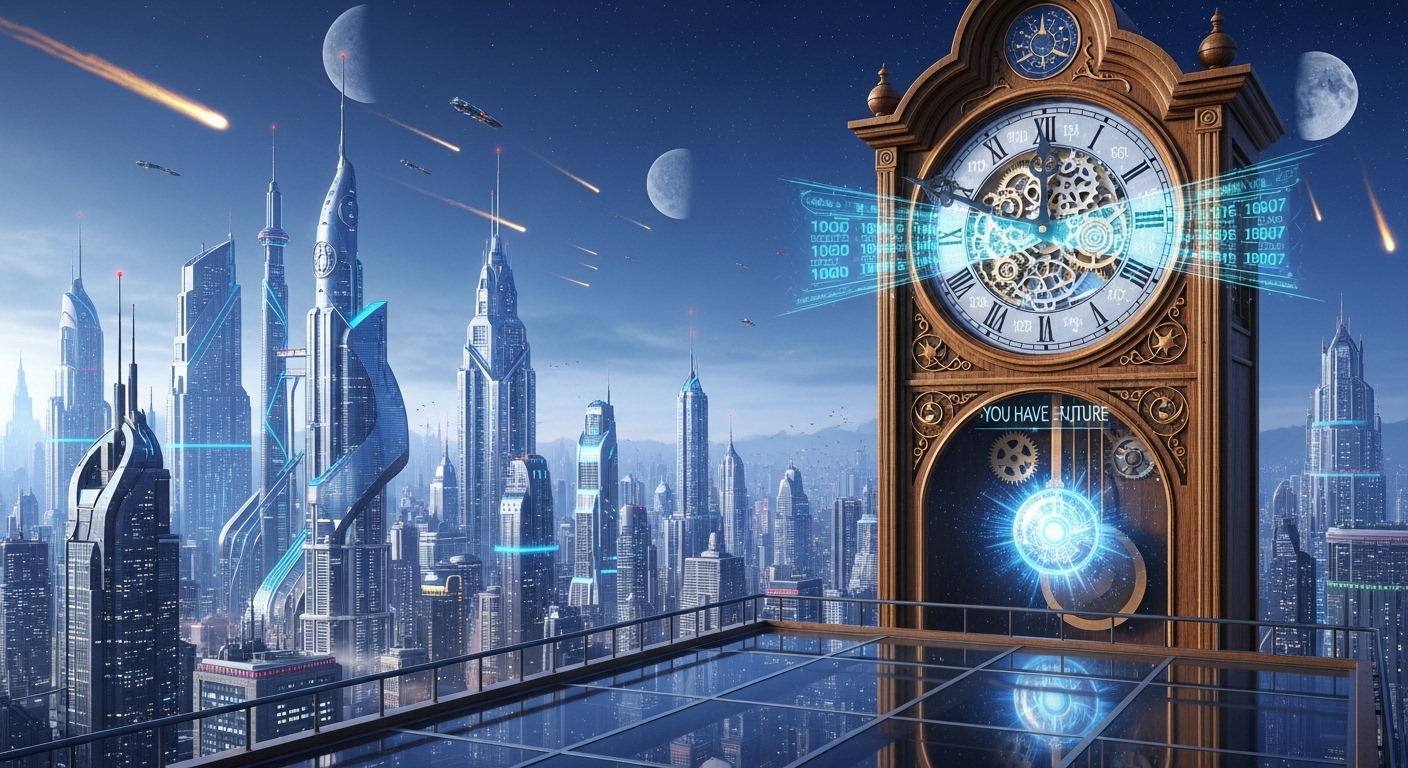Technology has become the foundation of the modern world. From the way we communicate to the way we travel, work, and even think, it has transformed nearly every aspect of life. The pace of change is astonishing, and what once seemed futuristic is now an everyday reality. We live in an age where artificial intelligence assists in medical diagnoses, where self-driving cars navigate roads, and where the internet connects billions of people across continents in real time. The story of technology is not just about machines or codes; it’s about human creativity, innovation, and the constant desire to improve.
The Digital Revolution and Its Beginnings
The modern technological revolution began with the invention of the computer. Early computers were massive machines that filled entire rooms, performing calculations slower than a modern smartphone. Yet, they were revolutionary for their time. As microprocessors emerged in the 1970s, computing became faster, smaller, and more accessible. Personal computers entered homes, and suddenly, technology was not limited to scientists or corporations—it became part of everyday life.
The rise of the internet in the 1990s marked a new chapter. The world wide web opened doors to information sharing, e-commerce, and digital communication. People began exploring the world through screens, businesses went online, and society entered a digital era that redefined economies and lifestyles.
The Mobile Revolution
If the computer revolution made technology personal, the mobile revolution made it universal. The arrival of smartphones changed how people interact with technology. No longer was it confined to desks or offices; it became something we carried everywhere. Mobile devices evolved from simple calling and texting tools to all-in-one entertainment, business, and communication hubs.
Applications and mobile ecosystems turned phones into lifelines. People could now order food, navigate cities, stream movies, play games, and even manage finances—all from their palms. Mobile technology not only connected people but also gave rise to a new digital economy powered by apps and services that reshaped industries.
Artificial Intelligence: The Mind of Machines
Artificial intelligence, or AI, is one of the most transformative forces in today’s world. It’s the science of making machines think, learn, and make decisions like humans. AI is no longer confined to laboratories or sci-fi stories—it’s everywhere. Voice assistants like Siri and Alexa, recommendation systems on streaming platforms, and predictive text on smartphones all operate on AI algorithms.
Machine learning, a branch of AI, allows systems to improve over time by analyzing data. In healthcare, AI detects diseases faster than human doctors. In finance, it predicts market trends. In transportation, it powers autonomous vehicles that are gradually reducing the need for human drivers. While AI brings remarkable efficiency and innovation, it also raises ethical questions about privacy, bias, and job automation. Balancing its potential with responsibility is one of the greatest challenges of the tech era.
The Internet of Things: A Connected World
The Internet of Things (IoT) represents the next stage of connectivity. It’s a network of interconnected devices that communicate and exchange data with each other. Smart homes, wearable health trackers, and even connected cars are part of this growing web. IoT has made life more convenient, efficient, and responsive.
Smart thermostats adjust temperatures based on user habits, wearable devices monitor heart rates, and cities deploy sensors to manage traffic and energy consumption. This interconnectedness makes daily life seamless, but it also introduces new security concerns. With so many devices sharing information, ensuring data privacy has become more critical than ever.
The Power of Cloud Computing
Cloud computing transformed how businesses and individuals store and process data. Instead of relying on local servers or physical storage, the cloud offers virtual space accessible from anywhere. This shift has enabled remote work, global collaboration, and scalable digital infrastructure.
For businesses, cloud computing reduces costs and enhances flexibility. It allows startups to compete with larger corporations by offering access to advanced computing power and analytics. For consumers, cloud storage means never losing files and being able to access them from any device. The cloud has become the invisible backbone of the digital world.
The Role of Technology in Communication
Communication is at the heart of human connection, and technology has revolutionized it. From letters to emails, landlines to video calls, each innovation has made the world feel smaller. Social media platforms redefined how people share ideas and build relationships. They have become powerful tools for activism, marketing, and entertainment.
However, this digital connectivity comes with challenges. The rise of misinformation, online harassment, and data exploitation has made people more cautious about their digital presence. Despite these concerns, technology continues to evolve as a means to bring people together across languages and borders.
The Rise of Virtual and Augmented Reality
Virtual reality (VR) and augmented reality (AR) are changing how people experience the digital world. VR immerses users in completely virtual environments, while AR overlays digital elements onto real-world surroundings. These technologies have moved beyond gaming and entertainment into education, healthcare, and business.
Students can now explore historical landmarks or dissect virtual specimens through VR headsets. Surgeons use AR to visualize internal organs during operations. Real estate agents provide virtual property tours to buyers around the globe. The fusion of virtual and real has created endless opportunities for creativity and innovation.
Blockchain and the Future of Transactions
Blockchain technology gained prominence through cryptocurrencies, but its potential extends far beyond digital money. It’s a decentralized ledger system that records transactions transparently and securely. Each transaction is verified across multiple computers, reducing the risk of fraud or tampering.
In finance, blockchain ensures faster and cheaper cross-border payments. In supply chains, it tracks goods from production to delivery, ensuring authenticity and transparency. Even in voting systems, blockchain offers the possibility of secure and verifiable elections. Its decentralized nature challenges traditional systems and empowers individuals by giving them more control over their data and assets.
The Green Side of Technology
While technology has often been blamed for pollution and waste, it also plays a vital role in environmental sustainability. Innovations in renewable energy, such as solar panels and wind turbines, are powered by technological advancement. Smart grids optimize electricity use, and electric vehicles are reducing dependence on fossil fuels.
Moreover, AI and big data are helping scientists predict climate patterns, manage resources efficiently, and monitor deforestation. Technology is becoming a key ally in the fight against climate change, making sustainable living more achievable for future generations.
The Future of Work and Automation
Automation and robotics are reshaping industries across the globe. Machines now perform tasks once thought impossible without human intervention. From manufacturing and logistics to healthcare and retail, automation enhances productivity and reduces costs.
However, this shift also sparks debates about job displacement. While some fear that robots will replace humans, others argue that technology creates new types of jobs that require creativity, critical thinking, and technical expertise. The workforce of the future will need to adapt, emphasizing skills that complement rather than compete with machines.
Cybersecurity in a Digital Age
As technology becomes more integrated into daily life, cybersecurity has emerged as a crucial concern. Every connected device, account, or network is a potential target for cyberattacks. Hackers exploit vulnerabilities to steal data, disrupt services, or manipulate systems.
Governments, companies, and individuals must prioritize digital safety. Stronger encryption, AI-powered threat detection, and cybersecurity education are essential to protect against evolving digital threats. In a world driven by data, security is not optional—it’s fundamental.
The Ethical Side of Technology
The advancement of technology also brings moral and philosophical questions. How much should machines know about humans? Who owns the data collected by smart devices? Should AI have limits in decision-making? These questions highlight the need for ethical guidelines that protect human dignity and freedom.
Tech companies are increasingly focusing on responsible innovation. Transparency, fairness, and accountability are becoming part of the conversation. As technology continues to shape societies, maintaining a balance between progress and ethics will determine the future of humanity’s digital journey.
Education and the Digital Classroom
Technology has transformed education beyond imagination. Online learning platforms, digital classrooms, and interactive tools have made education more accessible and personalized. Students from remote areas can now attend virtual classes taught by teachers across the world.
Artificial intelligence tailors lessons to individual learning speeds, while augmented reality makes complex subjects more engaging. The pandemic accelerated this digital transformation, proving that technology could keep education alive even when traditional systems were disrupted.
Entertainment and the Digital Era
The entertainment industry is one of the biggest beneficiaries of technological progress. Streaming platforms, gaming, and digital music have changed how people consume media. Movies and shows are now available on demand, and video games have become interactive social experiences.
Technology has also given rise to independent creators who can reach audiences without the need for traditional studios or publishers. Content creation has become democratized, and entertainment now thrives on creativity, diversity, and innovation.
Space Exploration and the Role of Technology
Technology is the driving force behind humanity’s quest to explore space. Satellites, telescopes, and spacecraft have expanded our understanding of the universe. Private companies are now entering the field, making space travel more accessible and sustainable.
Advanced robotics, AI-powered navigation, and 3D printing are shaping the future of space missions. The dream of colonizing other planets no longer feels like science fiction—it’s becoming a tangible possibility fueled by technological ambition.
The Road Ahead
The world stands on the brink of another technological revolution. Quantum computing, advanced AI, biotechnology, and human-machine interfaces are set to redefine what it means to live, work, and create. The integration of these technologies will bring both incredible opportunities and complex challenges.
As we move forward, it’s essential to ensure that technology serves humanity rather than controls it. The future will depend on how responsibly we use the tools we create. The story of technology is ultimately the story of human potential—a testament to our relentless curiosity, imagination, and drive to build a better world.
Conclusion
Technology is not just about gadgets or inventions; it’s about progress, connection, and the endless pursuit of possibilities. From the first computers to AI-driven systems, from local communication to global networks, each innovation has reshaped society in profound ways. The journey continues as technology evolves, pushing the boundaries of what is possible.
In this ever-changing landscape, one truth remains constant: technology will continue to shape the human story. Whether it brings utopia or challenges, the power lies in how people choose to use it. The digital age is not just a chapter—it’s the beginning of a new



